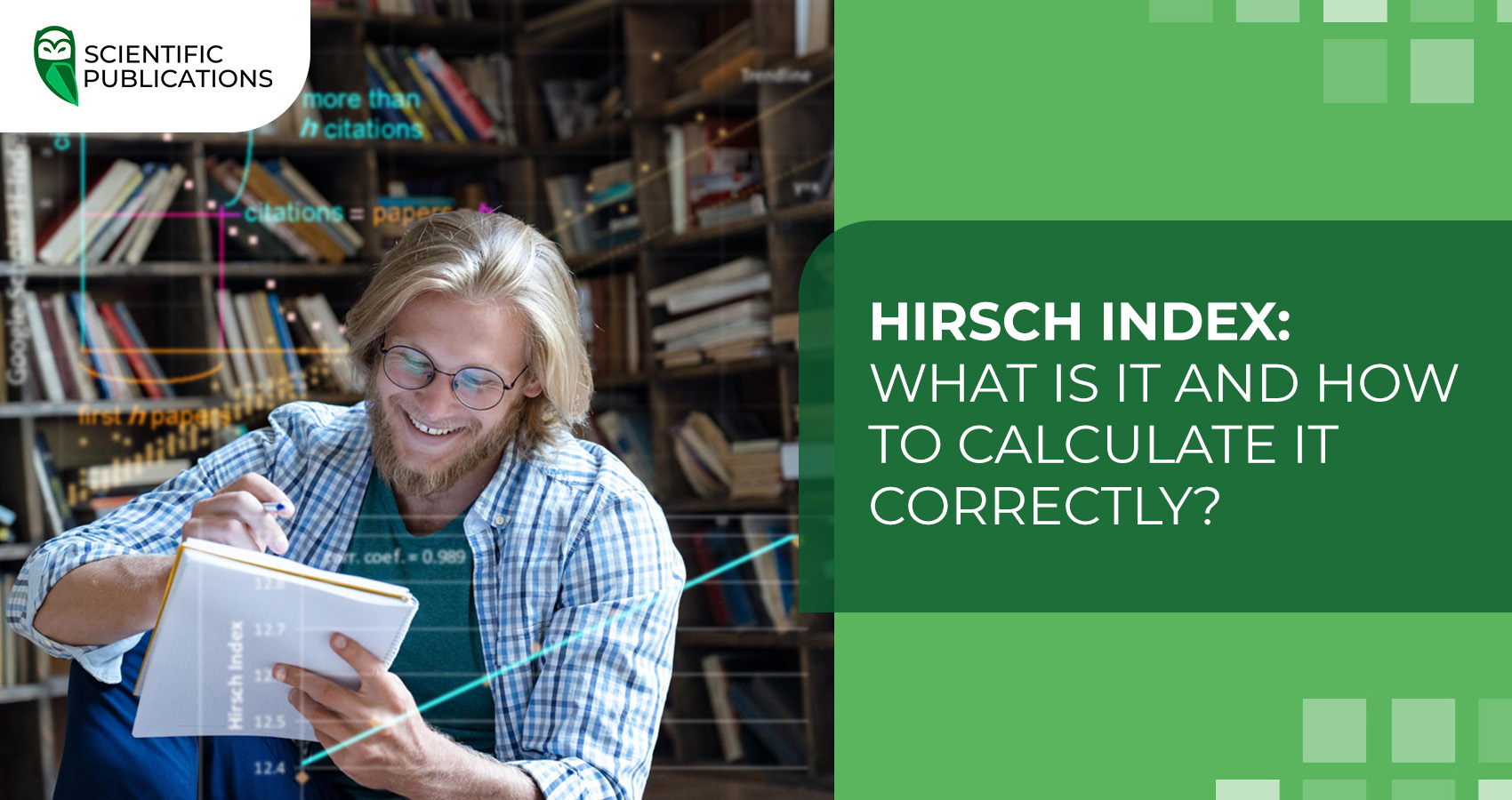Scientists, starting their professional career, strive to gain recognition and increase their popularity through research results, and the Hirsch index helps them to do this. The Hirsch index is one of the most influential and important metrics of researchers' activity. It reflects not only the activity of the author, but also the significance of his or her work, evaluating it by the number of citations. What is the Hirsch index? How is it calculated? What is its impact and benefits for a researcher? In this article, we will consider and provide answers to these questions.

What is the Hirsch index?
The Hirsch index (h-index) is a scientometric indicator of the impact of a researcher, team of researchers, research institution or scientific journal based on the number of publications and their citations. The Hirsch Index was proposed in 2005 by Argentine-American physicist Jorge Hirsch of the University of California, San Diego.
The Hirsch index is a quantitative measure of a researcher's productivity over the entire period of his or her scientific activity. This indicator is available in databases such as Scopus and Web of Science. In addition, the h-index can be calculated using free online resources such as Google Scholar.
How to calculate the Hirsch index?
The h-index is calculated based on the number of scientific publications of the author and the number of citations. Thus, the more citations a researcher's work is given, the higher his or her h-index will be.
The general formula for h-index:

if N articles are cited at least N times.
The calculation of the h-index reflects the relationship between the number of citations and the number of scientific articles. For example, if the h-index is 10, it means that the author has at least 10 publications, each of which has been cited at least 10 times.
For example, if an author has six articles with different numbers of citations, to determine the h-index, you need to list the articles and the number of citations in a column:
1 article – 7 citations
2 article – 5 citations
3 article – 4 citations
4 article – 3 citations
5 article – 2 citations
6 article – 1 citation
You should start with the first article that has the most citations, and then write them down in descending order.
We can see that the first, second, and third articles have more citations than their sequence numbers. However, starting from the fourth article, the number of citations becomes less than its number (4 > 3). In this case, the h-index will be the sequence number of the last article for which the number of citations is greater than or equal to its number.
So, considering the example in the column, the h-index is 3.
If there were a situation where the serial number of an article is equal to its number of citations, then this number would be the h-index. For example:
1 article – 7 citations
2 article – 6 citations
3 article – 5 citations
4 article – 4 citations
5 article – 2 citations
6 article – 1 citation
In this case, the h-index is 4.
Impact and importance of the Hirsch index for a scientist
Since the h-index is calculated on the basis of the number of scientific publications and their citations, it reflects the popularity of the researcher and his or her work among colleagues. This indicator demonstrates how relevant and significant the author's research is. A high h-index indicates that the researcher's work is recognised by the scientific community, which, in turn, increases his or her credibility and opens up new opportunities for further research and career development.
The desire to increase one's h-index can serve as an incentive for researchers to publish high-quality scientific papers and actively participate in scientific events. Thus, it contributes to the overall development of science, as increasing the visibility and citation of scientific achievements has a positive impact on the exchange of knowledge and ideas in the academic community.
Benefits of a high h-index for scientists
- One of the key factors for obtaining grants, scholarships, and research funding.
- An important indicator for employers when making employment decisions.
- In some academic institutions, the h-index is also a criterion taken into account when evaluating candidates for academic positions (professor, associate professor, etc.).
- It is used to select scientific journals to publish research results.
- It helps to identify current scientific trends.
- Increases chances for international cooperation.
A high h-index indicates a significant impact of the researcher due to numerous citations, which increases his or her prestige and visibility among colleagues. The Hirsch index is one of the most important scientometric parameters used in the modern scientific field. It can have a significant impact on career development, research activities, teaching practice, and other aspects of a professional career.
Do you want to increase your Hirsch index? “Scientific Publications” is ready to help you. We guarantee an effective increase in your h-index. Fill out the form below, and our manager will contact you within a business day. Let's work together for new scientific achievements!





